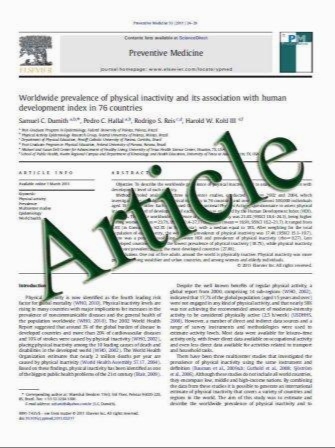The mammalian target of rapamycin inhibitor everolimus (RAD001) in early breast cancer: results of a pre-operative study
- نوع فایل : کتاب
- زبان : انگلیسی
- مؤلف : E. J. Macaskill J. M. S. Bartlett V. S. Sabine D. Faratian L. Renshaw S. White F. M. Campbell O. Young L. Williams J. S. Thomas M.
- چاپ و سال / کشور: 2010
Description
mTOR plays a key role in tumor cell cycle control, proliferation, and survival. RAD001 (everolimus) is a novel macrolide that inhibits mTOR and thus downstream signaling pathways. 31 post-menopausal women with early breast cancer were given 5 mg RAD001 once daily for 14 days prior to surgery. Biopsies were taken at diagnosis and at surgery (post 14 days of treatment) and assessed for immunohistochemical changes in proliferation (Ki67), apoptosis (active caspase-3), p-AKT (s473), p-S6 (s235/236 and s240/244), p-mTOR (s2448), ER, and PR. Five patients did not complete the 2-week treatment period due to adverse events. All adverse events were grade 1 or 2 (NCIC-CTC scale). RAD001 treatment significantly decreased proliferation (geometric mean reduction 74% from baseline (p = 0.019)), particularly in HER-2 positive tumors. High Ki67 pre-treatment correlated with reduction in Ki67, an increase in apoptosis, a reduction in p-AKT (cytoplasmic) and reduction in p-mTOR following treatment. Nuclear expression of p-AKT was significantly reduced with treatment. Tumors that had a reduction in Ki67 with treatment exhibited a significant reduction in cytoplasmic p-AKT. p-S6 staining was significantly reduced independently of Ki67 (p\0.001 for two sites of phosphorylation). RAD001 5 mg/daily is safe and tolerable in postmenopausal early breast cancer patients and inhibits the mTOR pathway and its downstream effectors, significantly reducing tumor cell proliferation. Tumors with high Ki67, high p-AKT, and HER-2 positivity may be more responsive to mTOR inhibition with RAD001. This is the first study to report results of RAD001 5 mg as a single agent in early breast cancer.
Breast Cancer Res Treat (2011) 128:725–734 DOI 10.1007/s10549-010-0967-z Received: 25 January 2010 / Accepted: 21 May 2010 / Published online: 13 October 2010 Springer Science+Business Media, LLC. 2010


